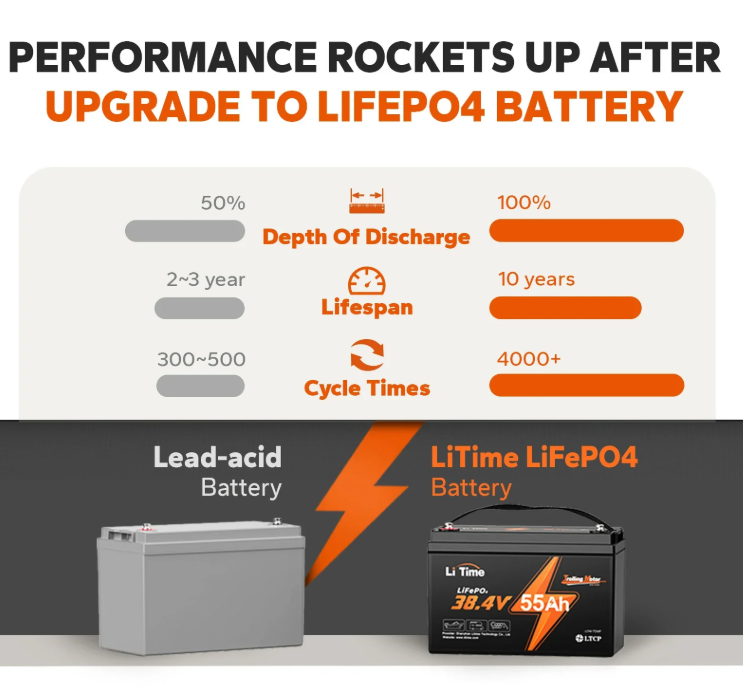
Sign up for daily news updates from CleanTechnica on email. Or follow us on Google News!
For many decades, lead-acid batteries dominated the industry. They were the cheapest option, they were durable compared to other options, and they worked fairly well in most weather conditions. But they have some serious downsides. They’re heavy. Many of them release hydrogen gas that can burn or explode if not properly ventilated. They also tend to only last a few seasons of use in many applications. You also have to take care to not deplete them too low to prevent premature degradation.
The good news? The industry is moving on! Lithium batteries are now available that can easily replace standard lead-acid battery sizes, and more importantly, they overcome the downsides.
This information in this article comes from its sponsor, LiTime. If you’d like to learn about LiTime’s lithium marine batteries, be sure to check out their website, where they have a variety of deep cycle marine batteries for motors and marine starting batteries.
The Advantages of Lithium Batteries
As I mentioned in the introduction, lead-acid batteries are heavy, they release flammable gas, they don’t last super long, and you can’t run them down too low. Lithium batteries solve these problems and come with a number of other advantages.
The biggest thing is that lithium-ion batteries have a higher energy density. This means that for every unit of weight, they can store a lot more energy. I mean, it’s not super hard to beat batteries with a lot of lead in them for weight! For batteries that hold the same amount of energy as a lead-acid deep cycle battery, a lithium battery simply weighs less. In many cases, they hold more energy, too.
Another huge advantage to lithium deep cycle batteries is that they last longer. In ICE cars, starter batteries often only last 2–4 years. For RV and marine applications, lead-acid batteries sometimes only last a season or two, failing during times of non-use. Lithium batteries simply aren’t as sensitive to periods of non-use, and can last for a lot longer than any lead-acid battery, whether in a starter or a deep cycle application.
Because there’s no distilled water to check on, no lead to be disposed of, and you have to buy them less often, they’re also a lot more eco-friendly!
Types of Marine Lithium Batteries
When buying lithium batteries, it’s important to buy the right battery for the job. Some are optimized for storage with smaller loads. Others are optimized for maximum output. Some are optimized for a sustained load.
The first kind of battery to consider is a deep cycle trolling motor battery. Trolling motors don’t pull a lot of power, obviously, but fishermen want them to run for hours. Long before people trolled on the internet, hanging out bait for arguments, fishermen would release bait into the water and drag it slowly by the fish hoping for a bite. This type of battery needs to have a lot of storage and the ability to hold up under a small load for a long time.
LiTime offers a variety of trolling motors batteries in a variety of capacities, and like all batteries, you can wire them in parallel or series to either get more capacity or get a higher voltage. But if you don’t know how to do any of that and just want to attach those leads and go, the company also offers batteries in higher voltages, eliminating the need to wire and re-wire your batteries on every trip!
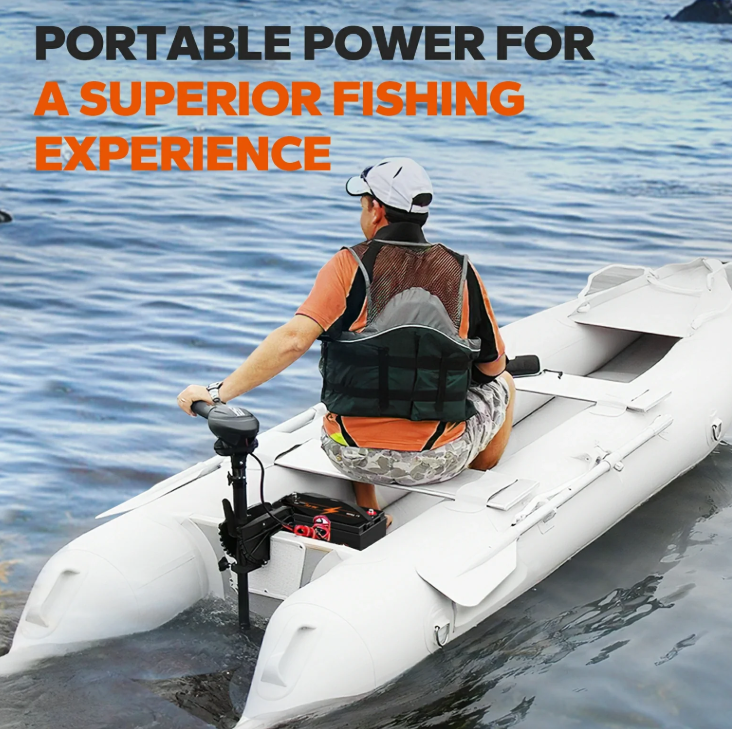
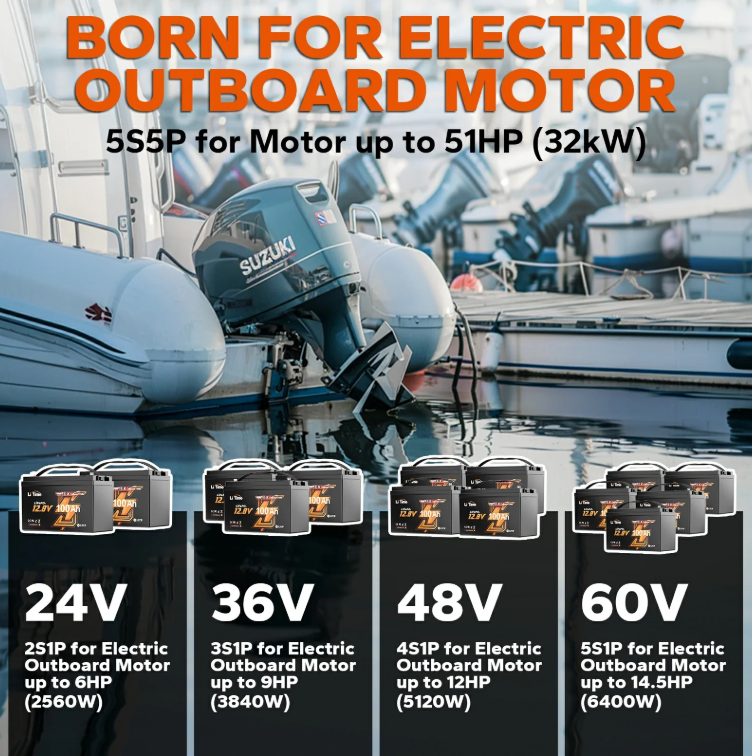
These days, batteries aren’t just for trolling motors. You can also get them for today’s more powerful electric outboard motors to do all of your boating on clean electric power.
You probably wouldn’t be surprised to hear that LiTime also offers a variety of batteries for that, too. They’re available in 12-volt like all batteries, but you can also get 36-volt and 48-volt batteries for a simplified installation and less hassle with charging and removal/replacement.
Finally, there are starting batteries, which are made to start an internal combustion engine (ICE). Obviously, everyone isn’t ready to go all-electric with their boats just yet. But that doesn’t mean you can’t benefit from swapping out your tired old lead-acid starter battery for one with better lithium battery cells inside. These batteries are much like those found in a car, optimized for a quick burst of energy for running a starter-motor that cranks up an ICE.
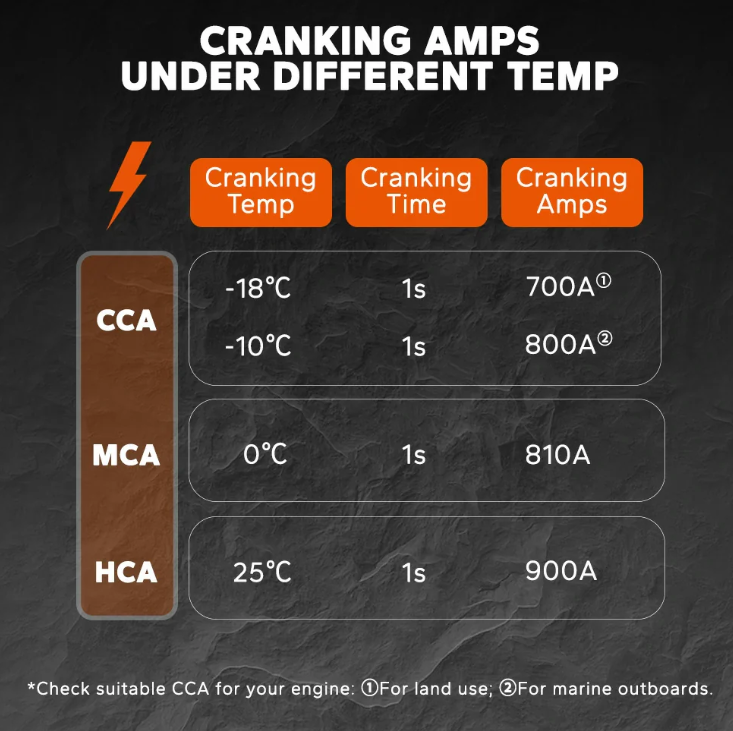
How To Choose & Use Marine Batteries
For those unfamiliar with how to actually use a marine battery, it’s important to do it right and do it safely to avoid injury or fire. I’ll finish this article up by explaining a little about them. If you’re ever unsure of how to do any of this, don’t be afraid to ask for help! Better safe than sorry.
Whether it’s a starter motor, an outboard motor, or a trolling motor, every motor has a range of voltages that it’s happy using. You have to get your battery setup to output the right voltages, either by buying a battery with the right voltage or by wiring batteries together in series to add their voltages together. In any case, consult your motor’s documentation and the battery’s manual to see what the needed voltages are and how many batteries can be wired in series.
The amp-hours or watt-hours are a measure of how much energy the battery holds. For a motor, this equals run-time. While you can figure out your motor’s draw and figure out how many hours a battery can run that load for, it’s really best to get the most storage you can for the budget. You never know when you’ll need some extra capacity, so get all that you can!
When installing batteries, it’s important to consider safety. The battery compartment or box shouldn’t be open to the elements and to splashing water. Batteries should be mounted securely so that they don’t come loose and break connections, or worse, short out and cause a fire! Wires should be of sufficient gauge to handle the amps they’re expected to have running through them (again, you don’t want a fire). A charger with the correct voltage from a reputable company is needed for your batteries.
Finally, it’s a good idea to store your batteries properly between uses. Ideally, you’ll put the batteries in a room-temperature place—like in your home or in a garage. Allowing them to sit in excessive heat or cold between boating trips can cause degradation, which should be avoided whenever possible. Finally, be sure to cover battery contacts/terminals to prevent accidents when carrying the batteries or while in storage.
Final Thoughts
Getting new lithium marine batteries or upgrading to them from lead-acid can seem intimidating at first, but it’s worth the effort and learning. Less weight, more storage capacity, more safety, and greater longevity can help take a lot of the hassle out of electric boating.
Fortunately, companies like LiTime are here to help us make it a simpler process. With innovative batteries in a variety of voltages, documentation, and help when you need it, LiTime can help you get started on your electric boating journey. Be sure to check out their website here to get started!
This article was sponsored by LiTime.
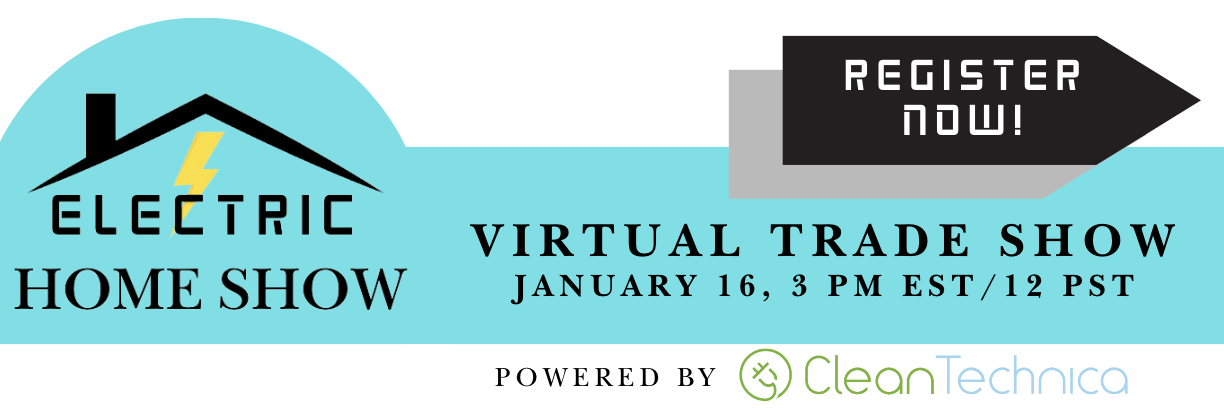
Chip in a few dollars a month to help support independent cleantech coverage that helps to accelerate the cleantech revolution!
Have a tip for CleanTechnica? Want to advertise? Want to suggest a guest for our CleanTech Talk podcast? Contact us here.
Sign up for our daily newsletter for 15 new cleantech stories a day. Or sign up for our weekly one if daily is too frequent.
CleanTechnica uses affiliate links. See our policy here.
CleanTechnica’s Comment Policy

